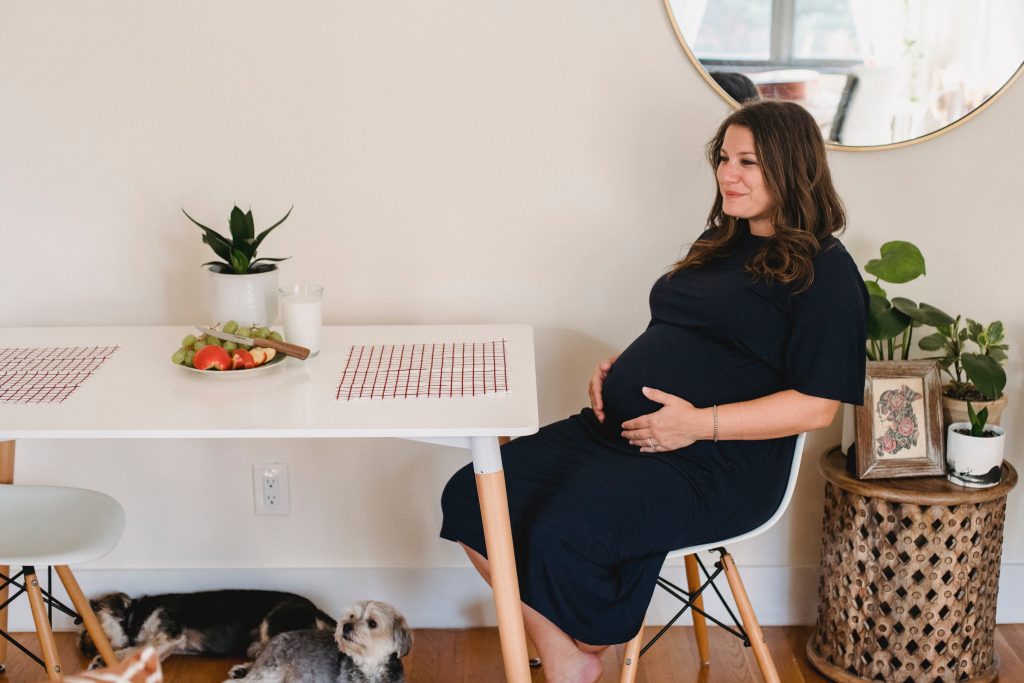Discover how poor sitting posture can contribute to increased back pain during pregnancy.
Can Poor Sitting Posture Increase Back Pain During Pregnancy?
During pregnancy, your body goes through numerous changes, and one of the most common complaints is back pain. It seems that those pesky pregnancy hormones have a knack for making every muscle ache and every ligament stretch to its limits. But did you know that your sitting posture could be exacerbating that pain? Let’s dive into the fascinating world of sitting posture and its connection to back pain during pregnancy.

Understanding the Connection Between Sitting Posture and Back Pain
Before we unravel the mysteries of how sitting posture affects back pain, let’s take a moment to appreciate the intricate science behind it all. You see, your posture is not just about looking poised and sophisticated; it plays a vital role in the alignment of your spine and the distribution of pressure on your joints and muscles.
When you have poor sitting posture, it puts unnecessary strain on your lower back, leading to discomfort and pain. Your muscles have to work harder to maintain an upright position, putting them at risk of fatigue and tension.
Furthermore, poor posture can affect the alignment of your spine, which can lead to the compression of nerves and blood vessels. This compression can cause pain, tingling sensations, and even numbness in your back and legs.
But what exactly happens when you sit for long periods of time? Well, let’s dive deeper into the science. When you sit, the pressure on your spinal discs increases significantly compared to when you are standing or lying down. This increased pressure can lead to disc degeneration and herniation, which are common causes of back pain.
Now, let’s talk about how pregnancy throws a delightful curveball into the mix. As your belly grows and your center of gravity shifts, your body naturally tries to compensate by adjusting its posture. This often results in a swayback, where your lower back curves excessively inward, putting strain on the muscles and ligaments.
Additionally, hormonal changes during pregnancy, specifically the hormone relaxin, cause your ligaments to become more flexible. While this is necessary for accommodating your growing baby and facilitating childbirth, it also means that your joints are more susceptible to injury and instability.
So, what can you do to maintain a healthy sitting posture and prevent back pain? One important aspect is to ensure that your chair provides adequate support for your lower back. Look for chairs with lumbar support or use a cushion to maintain the natural curve of your spine.
Another crucial factor is to take regular breaks from sitting. Stand up, stretch, and walk around every 30 minutes or so to relieve pressure on your spine and promote blood circulation. Incorporating exercises that strengthen your core and back muscles can also help improve your posture and reduce the risk of back pain.
Remember, your sitting posture is not just about appearances; it has a profound impact on your overall spinal health. By understanding the science behind it and making conscious efforts to maintain good posture, you can minimize the risk of back pain and enjoy a healthier, more comfortable life.
The Impact of Poor Sitting Posture on Pregnant Women
Now that we understand the science behind posture and its connection to back pain, let’s explore how poor sitting posture can impact pregnant women specifically.
During pregnancy, a woman’s body undergoes numerous changes to accommodate the growing baby. These changes can put extra strain on the back and spine, making it even more important to maintain good posture.
Increased Back Pain and Discomfort
If you already have a baby on board, you’re probably no stranger to back pain. But poor sitting posture can intensify that pain, turning it into a constant companion throughout your daily activities. Slouching or sitting for prolonged periods without proper support can strain your muscles and exacerbate existing discomfort.
As your baby grows, your center of gravity shifts forward, causing your lower back to arch more than usual. This increased curvature can lead to muscle imbalances and further contribute to back pain. Additionally, poor posture can compress the nerves in your spine, causing shooting pain or numbness in your legs.
Furthermore, poor posture can increase the pressure on your spinal discs, leading to disc degeneration and potential herniation. Ouch! We definitely don’t want that.
Potential Long-Term Effects
Unfortunately, the consequences of poor sitting posture during pregnancy can extend beyond the nine months. If you develop bad habits that persist after childbirth, you may be setting yourself up for chronic back pain and discomfort in the long run. So, let’s nip it in the bud and correct that posture!
Research has shown that poor posture during pregnancy can weaken the core muscles, which are essential for providing stability and support to the spine. Weaker core muscles can lead to ongoing back problems, even after pregnancy. Additionally, poor posture can affect your overall body alignment, potentially causing issues such as hip misalignment and pelvic floor dysfunction.
It’s important to note that maintaining good posture during pregnancy not only helps alleviate back pain but also promotes better circulation and digestion. By sitting with proper alignment, you can ensure that your baby is getting optimal blood flow and nutrients.
So, what can you do to improve your sitting posture during pregnancy? Start by choosing a chair with good lumbar support and using a cushion or rolled towel to support your lower back. Sit with your feet flat on the floor and avoid crossing your legs, as this can strain your hips and lower back. Remember to take frequent breaks and stretch to relieve any tension in your muscles.
Additionally, practicing prenatal yoga or engaging in exercises specifically designed for pregnant women can help strengthen your core muscles and improve your posture. These exercises focus on gentle movements and stretches that promote flexibility and stability.
By taking proactive steps to maintain good posture during pregnancy, you can minimize back pain, reduce the risk of long-term complications, and ensure a more comfortable and enjoyable journey to motherhood.
Correcting Your Sitting Posture During Pregnancy
Now that we’ve emphasized the importance of good sitting posture, you might be wondering how on earth you can achieve it amidst all the pregnancy-related challenges. Fear not, dear mama-to-be! We have some tips and tricks to help you maintain good posture and alleviate that nagging back pain.
During pregnancy, your body goes through numerous changes to accommodate the growing life inside you. These changes can put strain on your back and lead to discomfort. However, with the right techniques and adjustments, you can find relief and maintain a healthy sitting posture.
Tips for Maintaining Good Posture
First and foremost, sit up straight like the majestic queen you are! Keep your spine aligned and avoid slouching or leaning forward. It may take some practice, but your muscles will thank you.
When sitting, imagine a string pulling you up from the top of your head, elongating your spine. This visualization can help you maintain an upright position and prevent unnecessary strain on your back.
Secondly, ensure that your feet are planted firmly on the ground. If your feet don’t quite reach the floor, you can use a footrest or a stack of sturdy books to support them. This helps to distribute the weight more evenly and reduce the strain on your back.
In addition to supporting your feet, consider using a cushion or a small pillow to provide extra support to your lower back. Place it between your lower back and the chair to help maintain the natural curve of your spine.
The Role of Ergonomic Furniture
Investing in the right furniture can work wonders for your sitting posture during pregnancy. Look for chairs that provide adequate lumbar support and have an adjustable backrest and armrests. This way, you can tailor the chair’s position to fit your changing body and relieve pressure on your lower back.
When choosing a chair, opt for one with a seat that is wide enough to accommodate your growing belly comfortably. This will ensure that you have enough space to sit without feeling cramped or restricted.
Don’t forget about your trusty desk! Ensure that it is at an appropriate height, allowing your forearms to rest comfortably on the surface while keeping your shoulders relaxed. You may need to adjust the height by using risers or a keyboard tray.
In addition to adjusting the desk height, consider using a wrist rest to support your wrists and prevent strain. This small addition can make a big difference in maintaining a comfortable and ergonomic working environment.
Remember, good posture is not just about sitting correctly; it’s also about taking regular breaks to stretch and move around. Sitting for prolonged periods can lead to muscle stiffness and fatigue. So, make it a point to stand up, walk around, and do some gentle stretches every hour or so.
By implementing these tips and making small adjustments to your sitting posture and workspace, you can alleviate back pain and promote a healthier pregnancy. Your body and your baby will thank you for it!
Consultation with Healthcare Professionals
If you find yourself struggling to correct your sitting posture or experiencing persistent back pain, it’s essential to consult with healthcare professionals who specialize in prenatal care and musculoskeletal health.

When to Seek Medical Advice
If your back pain becomes severe, interferes with your daily activities, or is accompanied by other concerning symptoms, it’s time to pick up the phone and schedule a visit with your healthcare provider. They can assess your condition and recommend appropriate interventions or therapies.
Role of Physiotherapy in Managing Posture-related Back Pain
Physiotherapy may be recommended to treat posture-related back pain during pregnancy. A qualified physiotherapist can guide you through exercises and stretches that target the specific muscles affected by poor sitting posture. They can also provide valuable advice on maintaining proper body mechanics throughout your pregnancy journey.
Prevention and Management of Back Pain
Now that we’ve covered the importance of good sitting posture during pregnancy let’s discuss some additional measures you can take to prevent and manage that pesky back pain.
Importance of Regular Movement and Exercise
As tempting as it may be to lounge on the couch all day, frequent movement and gentle exercise can do wonders for your back pain. Engaging in activities like prenatal yoga, swimming, or even taking short walks can help keep your muscles strong and supple. Plus, it’s a great excuse to show off those adorable maternity active wear outfits!
The Role of Prenatal Yoga and Stretching
Prenatal yoga is not only a fantastic way to stay active, but it also promotes relaxation and flexibility. It focuses on gentle stretching and strengthening exercises that target your core and back muscles, helping you maintain good posture throughout your pregnancy.
Stretching is another powerful tool in your arsenal against back pain. Incorporate stretching into your daily routine, paying particular attention to your back, hips, and hamstrings. Just remember to listen to your body and avoid overstretching.
So, there you have it, dear mama-to-be! You now possess the knowledge and tools to combat poor sitting posture and the back pain that comes with it. Remember, maintaining good posture is not just about appearances; it’s about taking care of your body and ensuring a comfortable pregnancy experience. Embrace the queen that you are and give your spine the love and support it deserves!



